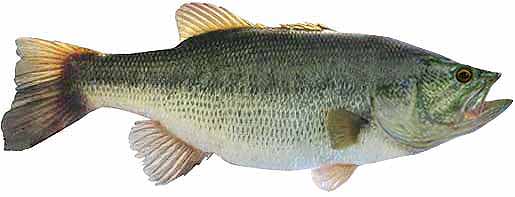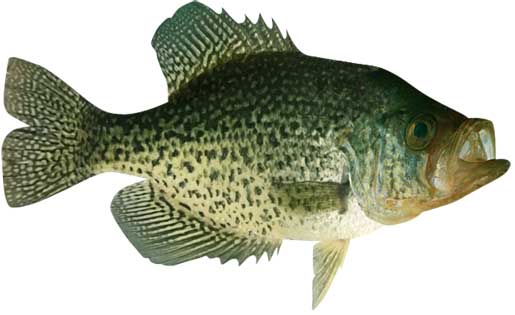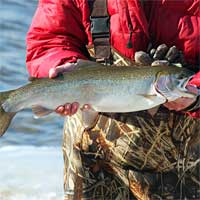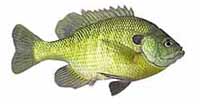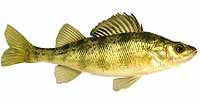Fishing Report For Lake Keowee, SC
By Rick Seaman
Last updated on .
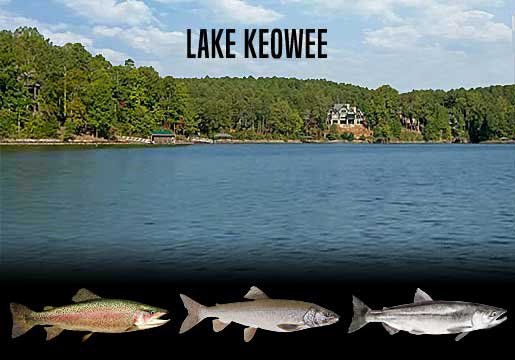
Fishing Reports
Popular Fish Species Lake Keowee, SC
Largemouth Bass
Current Report: Good
FALL. Now that Fall has arrived, bass here have moved shallow, following schools of baitfish into coves and shallow bays around 10 to 25 feet of water. According to reports by locals, largemouth are being caught all over the lake on stick worms, rigged wacky style. Boat docks, backs of coves, and submerged brush piles are primary targets. Currently topwater, jerkbaits, crankbaits, and slow-rolled spinnerbaits are catching most of the bass. Bass tournament results in recent months indicate winners are catching bass in the 4lb to 5lb range. Later in Fall, as deeper water cools, bait and bass move out to ledges, channel edges, points and humps where flutter spoons, jigs and drop shots are often good choices in 8 to 20 feet of water.
WINTER. Winter will isolate largemouth around slightly deeper structure, flats, points and creek channels. They can be found from 25 to 50 feet deep. Here they hold, feeding less frequently, awaiting warmer water to return in Spring. Slow presentations with drop shots, jigs, shaky head worms and Carolina rigs, are key to getting bites.
SPRING. Once water temperatures rise into the low 60's, largemouth will move from deep wintering holes, to shallower water nearby spawning areas. Vibrating jigs, jerkbaits and spinnerbaits typically get bites just away from the shoreline. At this time they are feeding aggressively in about 5 to 15 feet of water, and preparing for the spawn. Once water warms into the mid to high 60's, they will move into 2 to 4 feet of water, and create nests, then lay their eggs. Immediately afterwards, females move to deeper water and males remain to guard the eggs, and then the fry. After a couple weeks, the males also move to slightly deeper water. Deep-diving crankbaits, vibrating jigs, plastic worms and swimbaits are catching bass during this period.
SUMMER. Water temperatures will warm considerably in Summer. Bass will feed shallow, early and late in the day, where they will be caught on topwater, crankbaits and swimbaits. Wacky-rigged stick worms always catch finicky bass when the bite is slow. Largemouth bass here feed on gizzard shad, threadfin shad, small sunfish and crawfish. During the hotter parts of the day, they are being caught on points, channel edges, and ledges 20 to 40 feet deep. Some of the best reports seem to be from anglers fishing ledges next to creek channels.
Spotted Bass
Current Report: Fair To Good
FALL. As Fall cools the shallows, spotted bass here follow schools of baitfish into coves and bays, where spoons, and slow-rolled spinnerbaits, are often very successful. Lake Keowee is widely-known as an exceptional spotted bass fishery. Electronics can be extremely valuable for locating both bass and baitfish. Spotted bass like to eat crawdads, and tube baits fished on light line are catching some quality fish.
WINTER. Winter will draw them in large groups, around deeper structure, points and creek channels - anywhere there is baitfish. They can be found from 30 to 60 feet deep in Winter, shallower in the area nearby the power plant discharge of warmer water. Here they hold, feeding less aggressively, waiting warmer water to return in Spring.
SPRING. With water temperatures in the in the low 60's now, spotted bass have moved from deep wintering areas to depths of 5 to 15 feet, just outside spawning bays and coves. They are getting focused on the spawn. Once water warms into the high 60's, they move into even shallower water, and create nests, then lay their eggs. Immediately upon spawning, females move to deeper water around 20 feet deep. Males remain to guard the eggs, and then the fry. After a couple weeks, the males join the females. Deep crankbaits, spinnerbaits, small jigs, plastic worms and swimbaits are now catching plenty of spotted bass.
SUMMER. Spots are being caught on steep, rocky banks, ledges, humps, drop-offs and standing timber, in 20 to 40 of water, sometimes even deeper. At night they often venture shallower to feed in 10 to 20 feet of water. They tend to gather in small schools, and hold. They prefer to move up and down the water column on steep banks looking for food and ideal water temperatures. They are occasionally feeding shallow early and late in the day, where they are being caught on topwater, crankbaits and swimbaits. Drop-shots, Ned rigs, and wacky-rigged stick worms are catching finicky bass when they are deeper. They feed here on gizzard shad, threadfin shad, herring, small sunfish and crawfish. During the hotter parts of the day, they are being caught on points and ledges 35 to 40 feet deep. Spots will also hold in the shade of heavy, shallower vegetation. During the hottest months they will move even deeper, around 50 feet deep, and feed primarily on shad.
Black Crappie
Current Report: Fair To Good
FALL. Baitfish, which are moving into shallow flats, coves and bays, are drawing crappie into these areas. They are feeding heavily in preparation for the cold Winter, in 10 to 15 feet of water. Crowe Creek, Cane Creek, McKinneys Creek and Cedar Creek, all in the northern section of the lake, offer good crappie fishing. Minnows, hair jigs, and crappie jigs, are good options during this feeding marathon. Late fall starts the migration deeper, toward winter holding areas, for both crappie and baitfish. Small flutter spoons, fished in 12 to 20 feet of water, are a good option during this transition. Focus on brush piles along drops into deeper water.
WINTER. Once the shallows start cooling rapidly, crappie will migrate to deeper holding areas, mostly off shore. At this time they are typically caught using a very slow presentation, in 25 to 45 feet of water. Areas around the power plant discharge provide comfort for crappie in 15 to 25 feet of water. If crappie are suspending in open water, they often relate to some cover, or structure change, directly below them.
SPRING. In early Spring, crappie begin staging in 5 to 15 feet of water, just outside spawning bays and shallow flats. Spring is prime time to be on the water, as crappie have moved shallow to spawn. At that time, they are typically caught in 2 to 8 feet of water. Vegetation, docks, brush and wood are where most anglers catch crappie using small crappie jigs or live minnows. After the spawn, crappie typically move outside the spawning area and hold on cover close by, in 12 to 15 feet of water. Once they move deep, anglers report success using fish finders and forward facing sonar to locate schools of crappie, which tend to stack vertically around cover. Light tackle, with 4 lb to 8 lb line, is a popular choice.
SUMMER. Water temperatures warm, and crappie fishing is usually pretty good. Now that the spawn is over, and the hot Summer sun is warming the shallows, crappie have retreated to depths of 20 to 35 feet during the day, and 10 to 20 feet deep during the early morning and again at night. Some crappie embed in the shade of slightly shallower vegetation. This is a good time to focus around bridge pilings and deeper docks. Anglers are also locating schools of crappie hanging over deep structure and around creek channel edges.
Fishing Video
Fish species to fish for...
Guide to fishing for largemouth bass, smallmouth bass, spotted bass, black crappie, white crappie, rainbow trout, brown trout, bluegill and yellow perch at Lake Keowee in South Carolina.
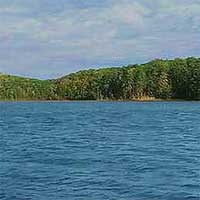 This 18,000-acre lake in the northwest part of the state has 300 miles of shoreline which is heavily populated with a nice mix of fish species. The lake is home to a variety of fish species, including largemouth bass, smallmouth bass, crappie, catfish, and bream.
This 18,000-acre lake in the northwest part of the state has 300 miles of shoreline which is heavily populated with a nice mix of fish species. The lake is home to a variety of fish species, including largemouth bass, smallmouth bass, crappie, catfish, and bream.
Primary fish species residing in Lake Keowee
Click images for fishing tips and details about each species.
Today's Weather & Forecast
Fishing Boat Rentals
Click here for fishing boat rentals.
Public Boat Launch Ramps & Landings
Click here for boat ramps.
Marinas
Click here for marinas.
Fishing License
Click here for a South Carolina Fishing License.
Map - Fishing & Access
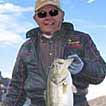 Rick Seaman is a fishing enthusiast with over five decades of fishing experience, a retired tournament fisherman, author of numerous published articles on fishing, and co-author of the book "Bass Fishing - It's not WHAT you throw, It's WHERE you throw it".
Rick Seaman is a fishing enthusiast with over five decades of fishing experience, a retired tournament fisherman, author of numerous published articles on fishing, and co-author of the book "Bass Fishing - It's not WHAT you throw, It's WHERE you throw it".
 Contact Information
Contact Information
Keowee Toxaway State Park
108 Residence Dr.
Sunset, SC 29685
864 868-2605
Fishing lakes in each state
100825
Lake Keowee, SC Report
SOUTH CAROLINA


Fishing for spotted bass in northwest SC.


